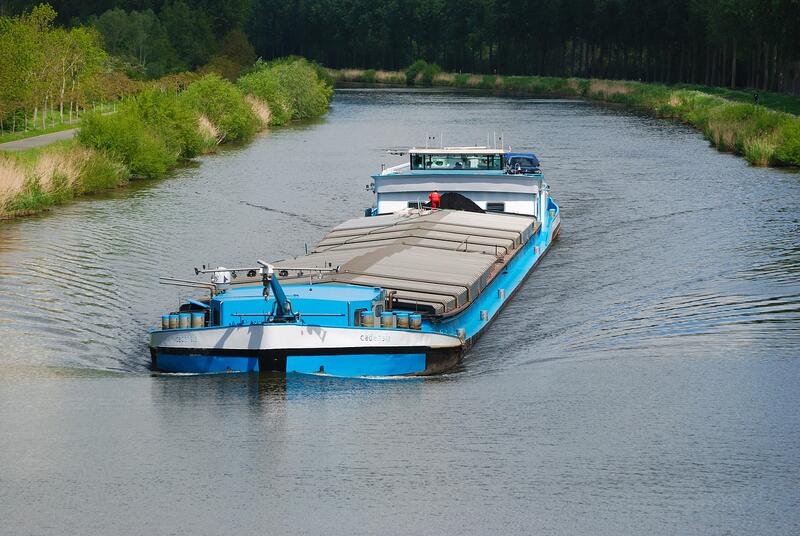Charting the Course to Decarbonization in Inland freight water transport: Strategies and Initiatives
This article outlines strategies and initiatives for reducing carbon emissions in inland freight water transport, an important but often overlooked sector in the fight against climate change.

The transport sector is one of the largest contributors to global carbon emissions, accounting for approximately 23% of global energy-related CO2 emissions. Inland freight water transport, which involves the movement of goods and cargo on rivers, canals, and other inland waterways, is a significant contributor to these emissions. Decarbonisation in the inland freight water transport sector is essential to reduce carbon emissions and mitigate the effects of climate change. This article will explore the concept of decarbonisation in the inland freight water transport sector, the sources of carbon emissions, strategies to reduce emissions, challenges facing decarbonisation, and the implications of decarbonisation for the sector.
What is decarbonisation in the inland freight water transport sector, and why is it important?
Decarbonisation refers to the process of reducing carbon emissions to zero or near-zero levels. In the inland freight water transport sector, decarbonisation involves reducing the carbon emissions associated with the movement of goods through inland waterways. Decarbonisation is important for several reasons. Firstly, the transport sector is a significant contributor to global carbon emissions, and decarbonisation is essential to mitigate the effects of climate change. Secondly, decarbonisation can lead to cost savings for the sector by reducing fuel consumption and increasing efficiency. Finally, decarbonisation can improve the sector's environmental performance, leading to a more sustainable and resilient transport system.
What are the main sources of carbon emissions in the inland freight water transport sector?
The main sources of carbon emissions in the inland freight water transport sector are fuel combustion and energy consumption. The combustion of fossil fuels, such as diesel and heavy fuel oil, is the primary source of carbon emissions in the sector. In addition, energy consumption from onboard equipment, such as lighting, heating, and cooling, also contributes to carbon emissions. Other sources of emissions include the production and transportation of fuels, maintenance and repair of vessels, and infrastructure development.
How can we reduce carbon emissions in the inland freight water transport sector?
There are several strategies to reduce carbon emissions in the inland freight water transport sector. These include:
- Energy efficiency: Improving the energy efficiency of vessels is a crucial strategy for reducing carbon emissions. This can be achieved through measures such as hull optimization, engine upgrades, and the use of more efficient propulsion systems.
- Fuel switching: Switching from fossil fuels to low-carbon alternatives, such as biofuels or hydrogen, can significantly reduce carbon emissions. However, the availability and cost of these fuels remain a challenge.
- Modal shift: Encouraging a shift from road and rail transport to inland waterways can reduce carbon emissions. This strategy can be achieved through the development of intermodal transport systems and the improvement of inland waterway infrastructure.
- Operational improvements: Improving operational practices, such as reducing vessel speed or optimizing cargo loading, can also reduce carbon emissions.
- Technological innovation: The development of new technologies, such as electric propulsion or autonomous vessels, can significantly reduce carbon emissions in the sector.
What are the challenges facing decarbonisation in the inland freight water transport sector?
Several challenges face decarbonisation in the inland freight water transport sector. These include:
- Cost: The cost of decarbonisation measures, such as fuel switching or vessel upgrades, can be significant. The high capital costs associated with these measures can be a barrier to their implementation, particularly for small and medium-sized enterprises.
- Infrastructure: The inland waterway infrastructure is often outdated and requires significant investment to accommodate low-carbon vessels and technologies.
- Fuel availability: The availability of low-carbon fuels, such as biofuels or hydrogen, remains a challenge. The lack of infrastructure for the production and distribution of these fuels can limit their adoption.
- Regulatory framework: The regulatory framework for the inland freight water transport sector is complex and fragmented, making it challenging to implement decarbonisation measures.
- Consumer demand: Consumer demand for sustainable transport options can be limited, particularly in the freight sector, where cost and speed are often prioritized over environmental considerations.
What are the implications of decarbonisation for the inland freight water transport sector?
Decarbonisation has several implications for the inland freight water transport sector. Firstly, it can lead to improved environmental performance, which can enhance the sector's reputation and competitiveness. Secondly, decarbonisation can lead to cost savings through reduced fuel consumption and increased efficiency. Thirdly, decarbonisation can create new business opportunities, such as the development of low-carbon technologies and the provision of sustainable transport services. Finally, decarbonisation can contribute to the achievement of global climate goals, such as the Paris Agreement's target of limiting global warming to below 2°C.
Conclusion
Decarbonisation in the inland freight water transport sector is essential to reduce carbon emissions and mitigate the effects of climate change. Strategies to reduce emissions include energy efficiency, fuel switching, modal shift, operational improvements, and technological innovation. However, several challenges, such as cost, infrastructure, fuel availability, regulatory framework, and consumer demand, need to be addressed to achieve decarbonisation. The implications of decarbonisation for the sector include improved environmental performance, cost savings, new business opportunities, and contribution to global climate goals. The inland freight water transport sector must embrace decarbonisation to achieve a sustainable and resilient transport system.